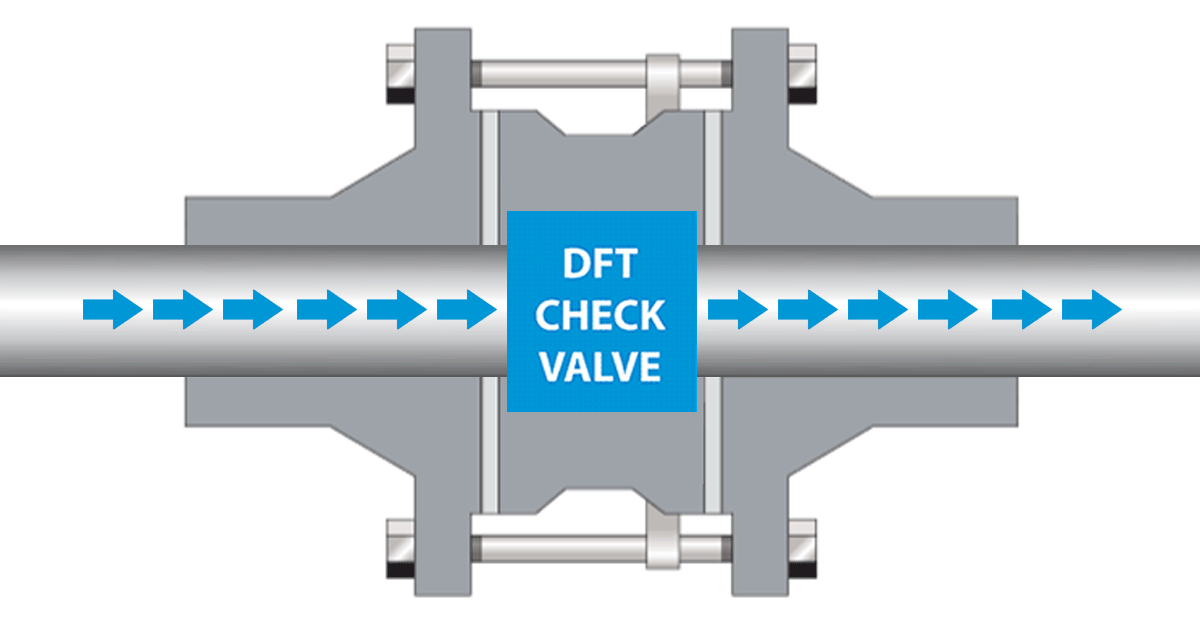April 16, 2020
By: Bruce Ellis, Inside Sales Consultant at Triangle Fluid Controls Ltd.
Check Valve Flow Orientation and Position Explained

As we know, not all styles of check valves are suitable for different flow directions. Pump design or space limitation are important considerations when designing a system that specifies the correct check valve to be used.
Given correct information, DFT axial flow centre guided check valves can be customized to most applications, thus increasing the performance and life span of the components in your system. If we know the media, its specific gravity and system design specifications, pressure, flow rate, temperature etc.; the correct valve can be customized to suit your application.

Horizontal Flow
This is the most common of the flow directions and all check valves. The question then becomes: “How do you choose one valve style over another?” It may be as simple as initial cost or lead-time. This can easily be offset by the advantages centre guided valves have over swing check and dual door designs:
- virtual elimination of water hammer
- reliable and less troublesome
- elimination of costly maintenance and downtime
Vertical Flow (Up)
This installation is commonly used in mine de-watering and sump applications, or where space is at a premium. It is important to remember any foreign matter introduced into the system, such as sand, can settle on the closed valve causing it to not open or close properly. If you are aware of this, modifications can be made to help prevent the problem. Again, since spring assisted axial flow valves don’t require backflow to aid in closing, water hammer is not an issue and the system will work smoother.
Vertical Flow (Down)
This is the most difficult flow direction for check valves to function. This orientation can be found in boiler supply lines and occasionally skid designs that are very space-limited. Some designs, such as swing checks, cannot be used in this situation, as they will open but not close. The spring assisted centre guided valves can be made to operate in this orientation. Given the static head pressure the valve is subjected to, the added spring will allow for proper operation.
In closing, it is important to note that the greater the amount of information given, the easier it is to make an educated buying decision. DFT Check Valves come in different styles, wafer, flanged and NPT (National Pipe Thread), to satisfy most requirements. They are also available in exotic alloys and can be customized to suit most applications.
As the Canadian master distributor for DFT® silent check valves, TFC proudly stands behind these product offerings and it shows from the beginning of our process, to the care taken in packaging and shipping to your door.
For more information please see the helpful resources below from dft-valves.com. We are here to help, so please contact us for any information you require.
You May Also Be Interested In:
E-Book: Design for Flexibility: Key Considerations to Make When Designing Fluid or Gas Flow Systems

